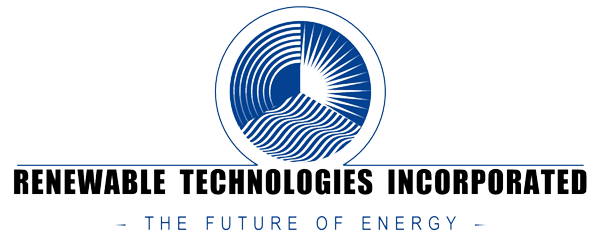Did you know that the sun is a renewable resource that has been the primary catalyst for life on earth since time immemorial? That’s just one of many examples of how sustainable energy sources can help power our world, if we only embrace the emerging technology designed to tap into it. In this article, we will discuss what renewable energy is, the primary different types of sustainable energy sources, and the reasons why someone might want to invest in renewable energy technologies. We’ll also explore some of the latest developments in this field and what they could mean for the future!
What Is Renewable Energy?
If you’ve paid any attention to the news in the last decade or so, you’ve likely heard some conversation regarding the global reliance on fossil fuels as our primary source of energy—and the negative impact this is having on our planet. As more and more data has emerged confirming the negative implications of burning fossil fuels as a means of powering our society (not to mention the dependence this causes on foreign nations with an excess of the stuff), so too has information come forward about alternative means of harvesting electricity, thermal heating, and other forms of power. The United Nations defines renewable energy as “energy [that] is derived from natural sources that are replenished at a higher rate than they are consumed.” This differs from natural gas or gasoline, for example, in that both of these resources exist in finite amounts—i.e. they will “run out” in a future generation.
Fortunately, many forward-thinking scientists have taken this matter to heart and begun their progressive march towards finding better sources of energy that leave a smaller carbon impact behind. So far, the energy sector is gradually adopting technologies like hydropower and wind-generated power, but there are a few more to consider, listed below.
Hydropower
One of the first types of “alternative” energy to be embraced by the world’s leading energy producers, hydropower relies on capturing the kinetic energy of water moving from reservoirs to rivers, or places of high elevation to lower elevations. As one of the fastest embraced renewable energy technologies, hydropower is the largest source of alternative energy produced on a mass scale today.
Oceanic Thermal and Kinetic Energy
If you’ve ever been mesmerized by the eternal pounding of waves on the shore, you may have unwittingly been gazing at an enormous source of untapped energy. Ocean energy strives to capture thermal and kinetic energy of naturally existing currents or waves, tapping into the ocean’s natural movements to produce electricity. While this energy source is still in the developmental stages, it suggests promising potential for further refinement in the future.
Wind
It would be hard to imagine taking a road trip or cross-country train ride through the United States these days without gazing at rows of wind turbines gently propelling our energy sector into the future. While this type of energy production is not yet perfect and can be costly to implement, we are seeing promising forward strides in terms of technology development, with 45% increased efficiency from 2010 to 2020.
Geothermal Energy
Beneath the earth’s surface lies a wealth of untapped thermal energy thanks to the planet’s molten core. In places rich with geothermal reservoirs such as the United States, Turkey, Indonesia, and New Zealand, these thermal reservoirs have been used for over one hundred years, and can be modified into hydrothermal reservoirs to change the temperature of the water within, generating electricity.
Biomass or Bioenergy
This type of energy resource is widely used across the world, including in rural areas, as it relies on organic materials (or biomass) in local abundance of the society looking to generate power. Examples of biomass materials include wood chips, branches, or crops, charcoal, manure, and other types of organic waste. Bioenergy is not a perfect solution for climate change, as it still produces harmful greenhouse gases—but it does produce carbon emissions to a lesser degree than so-called “dirty” energy methods like oil or coal.
Solar Power
Regarded by the U.N. as the “most abundant of all energy resources,” solar energy is owed a large amount of credit for the existence of life on earth. From fueling algae and other microscopic organisms to lichens and plants, fungus, and finally the animals that prey on those things, the sun is at the root of the richly diverse array of expressions of life on Earth. What’s more, it is enduring, reliable, and can even provide electricity in overcast environments. Solar power has come a long way since it was first explored in 1839—and in the last few decades, the cost of solar panels, their energy production and efficiency, and their lifespan have all improved for the better.
Top 3 Reasons to Invest in Renewable Energy Technologies
Of course, even if you’re not interested in switching to renewable energy technologies for moralistic reasons, there are several fundamentally practical reasons to give alternative energy a try as well. Here are the top three reasons to invest in renewable energy:
- Save money: While adding solar panels to your house or making the switch to alternative energy producers can come at an initial cost, this can actually save money for homeowners and business owners alike in the long run. Aside from potentially reducing utility bill costs—sometimes eliminating them entirely—switching to renewable energy technologies can offer tax breaks in select cases.
- Add value to your home or business: If you plan to potentially move and sell your home or expand your business to a new facility in the future, you may want to consider another key benefit of adding solar panels to your property: increased building value. In fact, most who invest in solar power see a Return on Investment (ROI) of about 10%–and this is not to mention that homes with solar panels installed tend to sell for about 4% more than those without.
- It’s the future of autonomous energy production, including infrastructure and job creation: Within the next 30 years, roughly two-thirds of global energy production is projected to be produced by renewable energy sources other than fossil fuels. By 2050, it is anticipated that 84% of energy sector jobs will be related to renewable energies—the likes of which are projected to create roughly 8 million jobs. Specifically solar power and wind energy are projected to grow at the most rapid rates in the next few decades. Investing in this movement is participating in boosting the economy, creating jobs, and protecting future generations from climate impact from excessive greenhouse emissions.
Best Stockton, CA Renewable Energy Technologies with Renewable
Whether we embrace the evolution of renewable energy technologies or not, the future is coming. We find ourselves at a moment where we get to decide how we are going to participate in the future we are all building together, for each other…and even if you don’t believe in all that, most people love the idea of saving a significant chunk of money while adding value to their investments at the same time. So whether you found your way to this article through altruistic or pragmatic reasons, embracing progressive march of “clean” energy methods is as practical as it is idealistic.
Solar power is one of the most reliable, affordable, and efficient renewable energy technologies available today—and it is only projected to continue to grow. Are you interested in throwing your hat in the ring and investing in photovoltaic systems? Contact the solar experts at Renewable Technologies, Inc. today to see how we can save you money!

